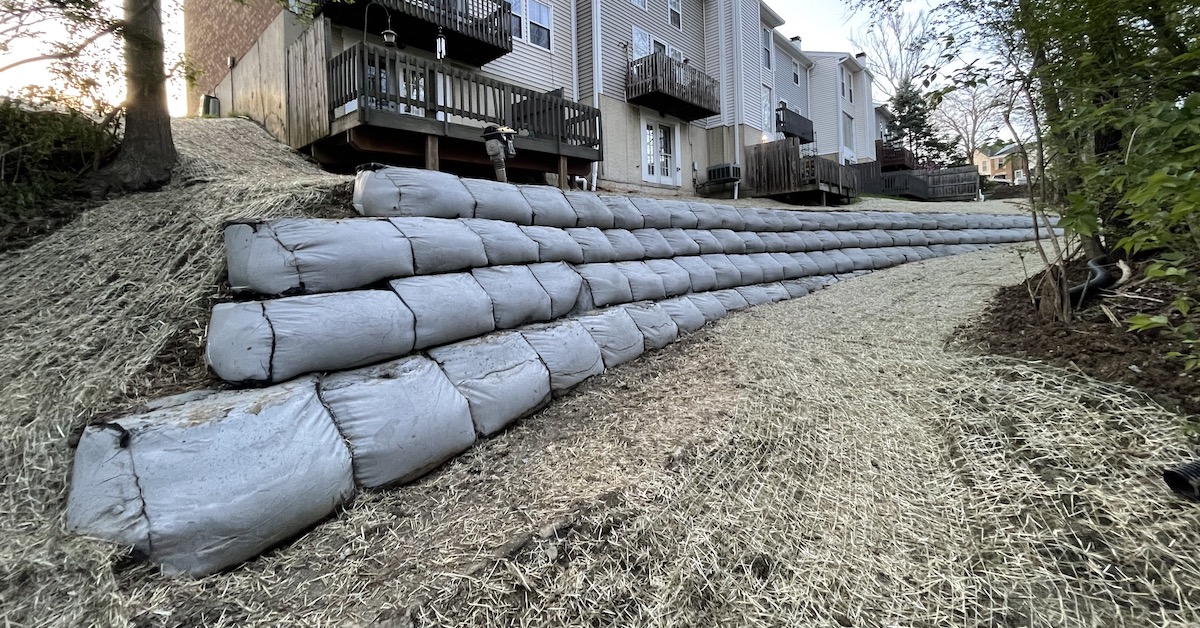A shoreline retaining wall is an essential part of an effective flood prevention strategy. Large retaining walls can be expensive, depending on the type of retaining wall you choose to build. But there are affordable options available that won’t break the bank.
Signs You Need a Commercial Retaining Wall
Erosion Is Already Happening
If you’re noticing consistent erosion, a shoreline retaining wall might be the best bet to prevent further loss of property. While there are erosion solutions available, such as beach nourishment or geotextiles, a retaining wall can be the most effective method for a permanent fix. Also, it can serve as a greater barrier against flooding than other types of erosion control solutions.
Building Foundations Are at Risk
If your building foundations are at risk from signification erosion, you’ll want to get some kind of protection installed as soon as possible. While some permanent retaining walls can take a large crew weeks to fully complete, there are other options available. A TrapBag retaining wall can be completed within a matter of hours with a crew of just two people using a loader.
Retaining Wall Construction Cost Factors
Factor 1: Location
One of the biggest factors in the cost of building a retaining wall is its location. Retaining walls on the ocean or a large river will likely cost more to install than retaining walls on small lakes or ponds. The angle of the slope and the materials can also be a factor in how much labor is required to build the retaining wall. The location of the job and the potential difficulty in bringing the necessary materials and equipment to the site can also affect the cost.
Factor 2: Wall Materials
There are several different material options available to build your retaining wall. Many water retaining walls are built from blocks, though other options include natural stone and metal. Blocks are a great choice since they can be less expensive and easier to install than other types of retaining walls, and they are likely to hold up for a long time. Blocks also grant a lot of flexibility in choosing the color and texture of your retaining wall.
Natural stones can create a more classic and unique look for your water retaining wall, but they are typically more expensive to buy and install than blocks. Metal retaining walls may not blend as well with the natural environment as natural stone walls, but they can be less expensive, depending on the construction.
TrapBags are also a cost-effective option since they can be filled with sand, washed gravel, or concrete. They are also highly flexible and can be used as a permanent or temporary retaining wall.
Factor 3: Labor
The location, materials, size, and other factors will all impact the labor costs of building a retaining wall. Larger and more complex jobs may require a structural engineer to work on the project, especially if it is on a steep incline. Make sure you shop around and talk with several different contractors to get the best price available. You may also want to look at a portfolio of their previous jobs to ensure they’re going to do quality work.
This is another area where TrapBags have an advantage. An entire TrapBag retaining wall can be deployed by a team of two people using heavy equipment within just a few hours, which can cut back considerably on labor costs. TrapBags are frequently installed at short notice in order to stop erosion from destroying homes and businesses. Our expert team would also be happy to talk with you about the job in advance and give you advice on how to make sure the retaining wall construction goes smoothly.
Factor 4: Urgency
Getting a job done faster typically means more money. That’s especially true if you’re trying to quickly build a flood barrier before or after a major storm—when you’re competing with many other people trying to do the same thing. Depending on your location, retaining wall construction can also be more expensive during certain times of the year, such as hurricane season.
Why Use TrapBags for Retaining Wall Construction
TrapBags are a popular tool for flood prevention because they are affordable, reliable, and quick to deploy. They are effective as water retaining walls to prevent flooding and erosion. Each TrapBag is built with a pentagon-shaped structure using strong, recyclable geotextile fabric. TrapBags come as a chain of cells and are pulled out like an accordion. Each of the cells are self-contained yet rely on the next cell for added strength. Even if one TrapBag cell were to fail, the rest of the wall would continue to hold.
TrapBags have a lifespan of at least five years and have been effectively used to protect homes, businesses, and infrastructure. Temporary TrapBags are a perfect fit for construction sites or protecting a retaining wall while construction and repairs take place. TrapBags can also be filled with concrete and used as a fabric-forming system to create permanent concrete retaining walls.
Order TrapBags for Your Shoreline Retaining Wall
Want to learn more about how TrapBags can create a fast and affordable retaining wall to protect your property from erosion and flooding? Reach out to our helpful staff to talk about TrapBags today.


